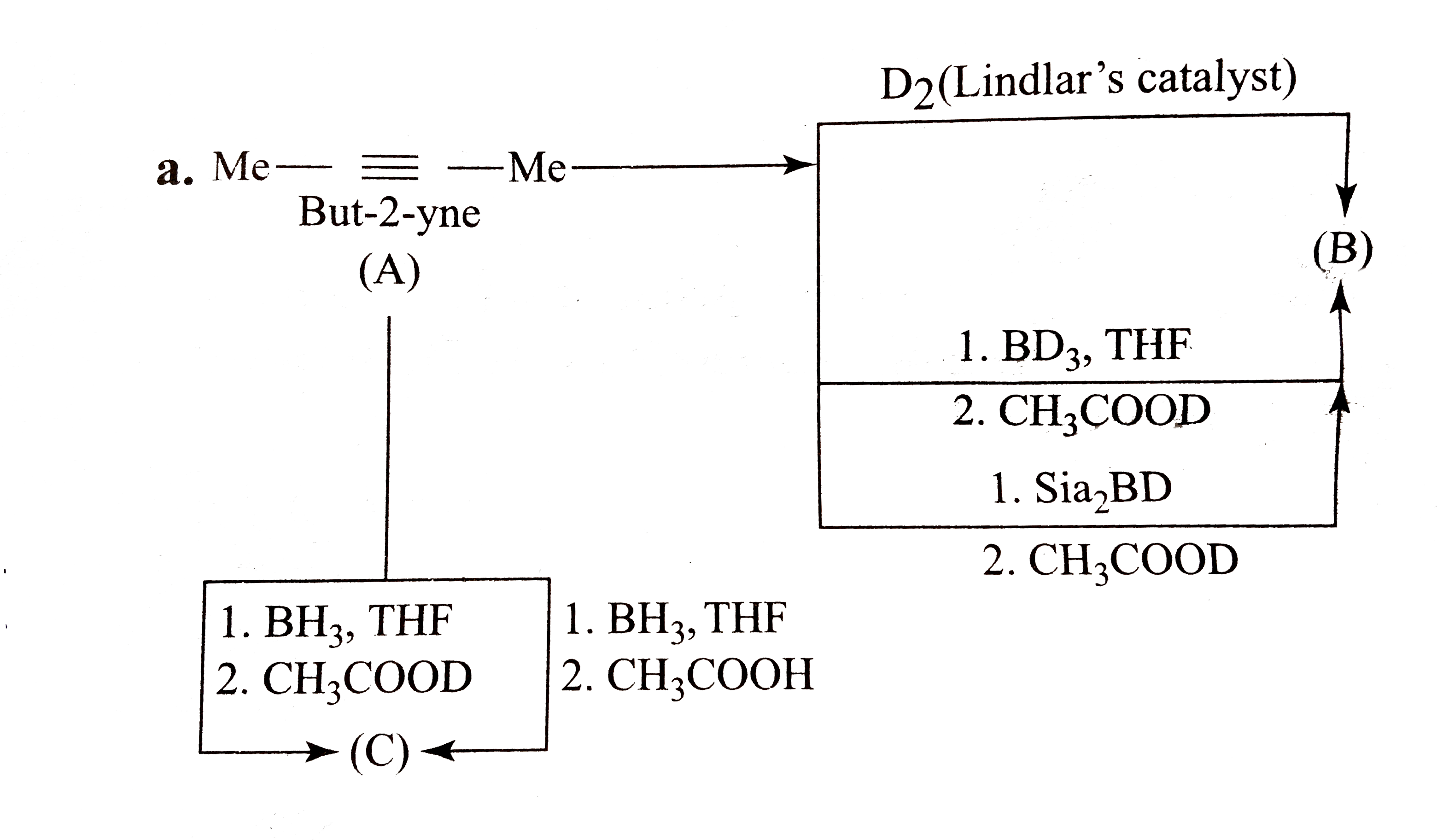Give the product, indicating stereo-chemistry of cyclohexene with Br2
To determine the product of the reaction between cyclohexene and bromine (Br₂), we can follow these steps:
Step 1: Identify the Reactants
We start with cyclohexene, which has a double bond between two carbon atoms in a six-membered ring structure. The structure of cyclohexene can be represented as follows:
HH C/CCHC C−−−C C/HBr
Step 2: Reaction with Bromine
When cyclohexene reacts with bromine (Br₂), the double bond opens up to allow the addition of bromine across the double bond. The reaction proceeds via a cyclic bromonium ion intermediate.
Step 3: Formation of the Bromonium Ion
Upon the addition of Br₂, the bromine molecule approaches the double bond. One bromine atom forms a bond with one of the carbons in the double bond, while the other bromine atom forms a cyclic bromonium ion. This intermediate is characterized by a three-membered ring containing the bromine atom and the two carbons from the original double bond.
BrCCCHC C−−−C C/HBr
Step 4: Nucleophilic Attack
The bromonium ion is then attacked by a bromide ion (Br⁻) from the opposite side of the bromonium ion. This back-side attack leads to the formation of a trans product.
Step 5: Final Product
The final product of the reaction is trans-1,2-dibromocyclohexane. The stereochemistry indicates that the two bromine atoms are added to opposite sides of the cyclohexane ring.
BrCCCHC C−−−C C/HBr
Conclusion
The product of the reaction of cyclohexene with Br₂ is trans-1,2-dibromocyclohexane.
---
We start with cyclohexene, which has a double bond between two carbon atoms in a six-membered ring structure. The structure of cyclohexene can be represented as follows:
When cyclohexene reacts with bromine (Br₂), the double bond opens up to allow the addition of bromine across the double bond. The reaction proceeds via a cyclic bromonium ion intermediate.
Upon the addition of Br₂, the bromine molecule approaches the double bond. One bromine atom forms a bond with one of the carbons in the double bond, while the other bromine atom forms a cyclic bromonium ion. This intermediate is characterized by a three-membered ring containing the bromine atom and the two carbons from the original double bond.
The bromonium ion is then attacked by a bromide ion (Br⁻) from the opposite side of the bromonium ion. This back-side attack leads to the formation of a trans product.
The final product of the reaction is trans-1,2-dibromocyclohexane. The stereochemistry indicates that the two bromine atoms are added to opposite sides of the cyclohexane ring.
The product of the reaction of cyclohexene with Br₂ is trans-1,2-dibromocyclohexane.
Topper's Solved these Questions
- ORGANIC REACTION MECHANISMBOOK - CENGAGE CHEMISTRY ENGLISHCHAPTER - ORGANIC REACTION MECHANISMEXERCISE - Subjective
19 Videos
- ORGANIC REACTION MECHANISMBOOK - CENGAGE CHEMISTRY ENGLISHCHAPTER - ORGANIC REACTION MECHANISMEXERCISE - Comprehension
35 Videos
- ORGANIC REACTION MECHANISMBOOK - CENGAGE CHEMISTRY ENGLISHCHAPTER - ORGANIC REACTION MECHANISMEXERCISE - Analytical and Descriptive
6 Videos
- NCERT BASED EXERCISEBOOK - CENGAGE CHEMISTRY ENGLISHCHAPTER - NCERT BASED EXERCISEEXERCISE - Chemical Equilibrium
73 Videos
- P-BLOCK GROUP 13 - BORON FAMILYBOOK - CENGAGE CHEMISTRY ENGLISHCHAPTER - P-BLOCK GROUP 13 - BORON FAMILYEXERCISE - Exercise Archives (Subjecive)
9 Videos
Similar Questions
Knowledge Check
Trans-cyclohexane-1,2-diol can be obtained by the reaction of cyclohexene with:
AKMnO4BOsO4Cperoxy formic acid /H3O+DSeO2Give a simple test to differentiate cyclohexane and cyclohexene
ABr2/H2OBBayer's reagentCTollen's reagentDBoth a and bWhich of the following compound give diastereomers when treated with Br2 in CCl4?
A B
B C
C D
D
Give a comparative account of the chemistry of carbon and silicon with regard to their property of catenation .
View SolutionGive three examples in which green chemistry has been applied ?
View Solution(a) Give the products of the reaction of KOH with
(i) C4H9Br
(ii) C2H5CHBrCH3
(iii) Me3CBr
(b) Give the reactivity order.
(c) Give the factors that determine the major product.
View SolutionWrite all the resonating structures of :

Which of these carbons will react with BrΘ to give thermodynamically favoured product ?
View SolutionThe product formed by the reaction of acetamide with Br2 in presence of NaOH is:
View Solution

